Durable Kitchen Countertop Materials Explored
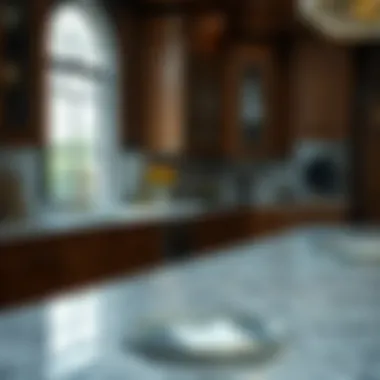
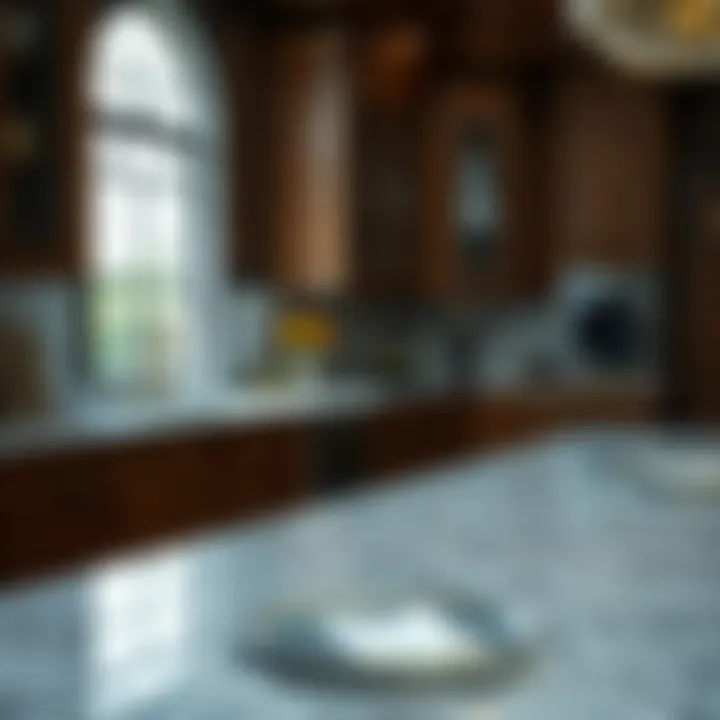
Intro
When it comes to the heart of the home, the kitchen, the choice of countertop material truly can make or break the design and functionality. Navigating through the different options available in today's market requires a blend of aesthetics and practical concerns. As homeowners and designers embark on the quest for the ideal kitchen surface, it’s essential to consider durability, maintenance, and how each material can complement the overall kitchen motif.
With an array of choices, from classic granite to modern quartz, and even eco-friendly bamboo, understanding the nuances of each surface is crucial. This article examines various kitchen countertop materials, offering insights into their unique characteristics while also emphasizing the importance of longevity and style.
Through this deep dive, we'll shed light on what makes a countertop not just beautiful, but also resilient against the daily wear and tear of kitchen life. Whether you’re remodeling, designing a new space, or simply dreaming about your ideal kitchen, this guide seeks to provide the necessary knowledge for informed decisions that balance both functionality and visual appeal.
Understanding Kitchen Countertop Durability
When selecting materials for kitchen countertops, the subject of durability springs up prominently. While aesthetics can grab attention, durability ultimately plays a pivotal role where practicality is concerned. Kitchen surfaces endure quite a beating, with daily activities including but not limited to cooking, cleaning, and general family chatter—let’s face it, this room is often the heart of the home. As a homeowner or a designer, grasping this idea can guide decisions that save both time and money in the long run.
Importance of Durability in Kitchen Surfaces
Durability is the cornerstone of a reliable kitchen countertop. It ensures that the surface withstands the areas rigors—be it hot pots or spilled liquids. A countertop that is able to endure these conditions avoids becoming the source of frustration or frequent replacements. Greater durability typically translates to extended lifespan, which is a value-add for homeowners. A solid choice can very much pay for itself over time.
Factors Affecting Durability
The durability of kitchen countertops does not solely hinge on a singular aspect; rather, it’s a finely woven fabric of different factors.
Material Composition
When it comes to material composition, this refers to what the countertop is actually made of. Different materials have varied resilience to heat, stains, and scratches. For instance, granite boasts strong natural properties, making it a go-to for many. However, its porous nature means it can absorb stains if not treated with sealants. Alternatively, quartz offers a mix of natural stone and engineered materials, securing a non-porous surface that’s both strong and less prone to staining—think of it as a shield against the daily influx of kitchen activity.
Usage Patterns
Usage patterns are crucial too. A countertop in a home that regularly hosts family meals and entertaining might experience heavier traffic than one that sees mostly solo cooking. This heavy use can lead to potential wear: scratches from knives or rings from coffee cups. Understanding how the space is used can lead to better material choices. A less durable material might suffice in a household where the kitchen is primarily used for light meal prep. On the other hand, for a bustling kitchen, opting for hardier options like stainless steel or solid surface materials makes much more sense.
Environmental Factors
Environmental factors can also play a significant role in countertop durability. This involves not just the physical environment, like humidity and temperature fluctuations, but also the general conditions of the kitchen. For example, those cooking with lots of acidic ingredients may want to avoid surfaces that can stain easily, as marble might. Rocks and minerals can react with various substances, affecting their longevity. Therefore, greater awareness about the surrounding environment aids in selecting the right countertop that stands strong against those conditions.
A durable countertop choice is more than just a pretty face; it’s an investment that pays off over time.
Popular Durable Materials
When it comes to selecting a kitchen countertop, durability is often at the forefront of homeowners' minds. Not only do these surfaces need to withstand the daily wear and tear of cooking, but they also need to resist staining, scratching, and heat. Popular durable materials, hence, represent the best blend of longevity, utility, and style.
Granite Countertops
Characteristics
Granite is a natural stone known for its impressive durability and unique visual appeal. Each slab comes with distinct color and pattern. This uniqueness makes granite a favored choice because it not only stands out but also enhances the kitchen's overall ambiance. Its composition allows for a resilient surface that is highly resistant to scratches and heat. Because granite is formed over millions of years, it symbolizes endurance itself.
Advantages and Disadvantages
When looking at the benefits of granite, one must consider its strength—this countertop can take a beating. Plus, its resistance to heat enables you to place hot pots directly on it without worry. However, a notable downside is that granite can be prone to chipping, particularly on edges. Therefore, while installing it, adequate care in the design can help mitigate this issue. One might say, it's a double-edged sword in the kitchen: beautiful yet formidable.
Maintenance Tips
Maintaining granite surfaces involves a few simple acts. Regular sealing is essential to prevent staining, and using mild, non-abrasive cleaners will help keep its shine intact. Remember, a little knowledge goes a long way—not cleaning spills immediately can lead to stains setting in, making it harder to maintain that lovely appearance.
Quartz Countertops
Composition and Benefits
Similar to granite, quartz offers the unique advantage of being engineered. Made from approximately 90% crushed natural stone and mixed with resin, it's non-porous, which means it doesn't require sealing like its granite counterpart. Thus, quartz presents a great option for homeowners desiring low maintenance without sacrificing style. The multitude of design options available makes quartz a prime selection for a modern kitchen space.
Sustainability Factors
From an eco-conscious angle, quartz countertops can have a sustainable edge. Many manufacturers utilize recycled materials in their compositions. As homeowners become more environmentally aware, sourcing quartz from eco-friendly suppliers adds peace of mind to your kitchen project. Impact on the environment becomes partially mitigated when one chooses a product sourced responsibly.
Comparative Longevity
In terms of durability, quartz ranks high. While granite can chip, quartz is notably more flexible, making it less susceptible to breaking. Longevity of use can be observed as quartz, when well maintained, can last many years without showing signs of significant wear. So, if you’re aiming for a long-lasting surface, quartz is certainly one to consider.
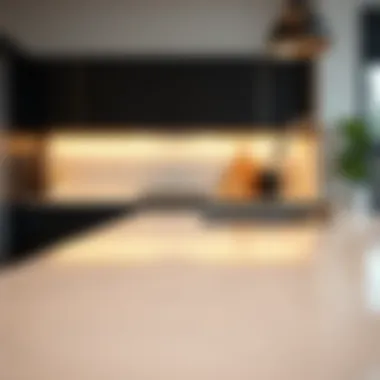
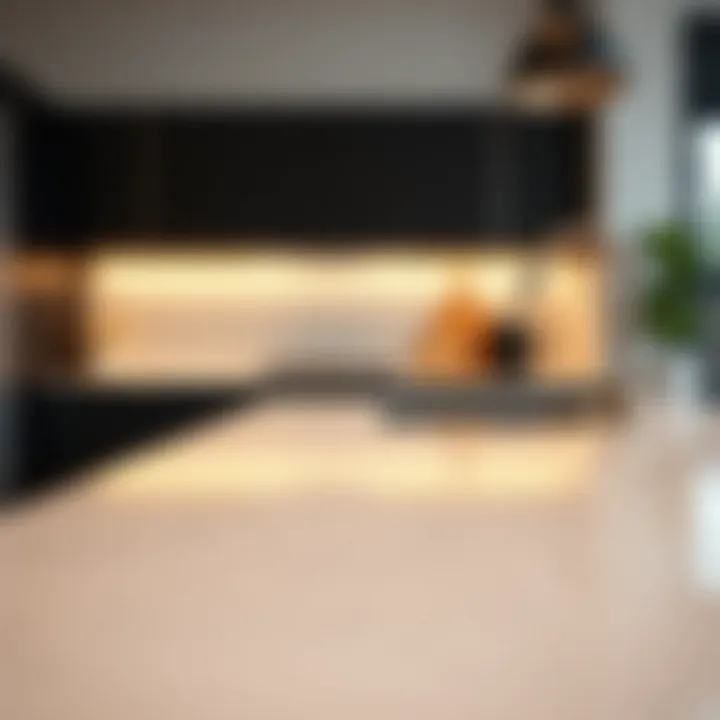
Marble Countertops
Natural Aesthetics
Marble countertops bring a sense of timeless elegance and sophistication to a kitchen. No two slabs are alike, ensuring that each installation has its own unique flair. The soft veining and various colors present in marble can create a truly stunning visual appeal. However, while it may look fabulous, its porous nature means it requires more attention compared to other stones.
Durability Challenges
Despite its charm, marble is more susceptible to scratching and staining. It has a somewhat sensitive disposition—acids found in common kitchen ingredients can cause etching. Therefore, users must approach with extra caution in cleaning and food preparation to maintain this beauty.
Care Guidelines
For those who choose marble, regular sealing monthly or bi-annually is a necessity. Use coasters where possible and clean spills immediately to ensure longevity. It’s a trade-off; the gorgeous looks come with a demand for careful handling.
Concrete Countertops
Customization Options
Concrete brings a heavy-duty option to countertops, allowing for a high degree of customization including color and texture. This characteristic enables creativity in design, making it a fun choice for those who wish for something out of the ordinary. You can personalize the countertop to match your kitchen’s overall theme, adding unique embedded items such as glass, stone, or shells.
Durability Factors
Concrete is robust, lasting a long time. However, it requires proper sealing to maintain its surface integrity and prevent stains. Without the right care, it can become porous, leading to water damage over time. Nevertheless, when sealed correctly, concrete has significant durability against heat and wear.
Sealing and Care
Sealing is an essential part of care for concrete countertops. Homeowners should expect to seal their countertops every couple of years, depending on usage. Maintenance isn’t overly labor-intensive, but it’s crucial to pay attention. This allows you to showcase a truly individual and strong material that can handle the heaviness of day-to-day kitchen life.
Stainless Steel Countertops
Industrial Appeal
With a clean, modern look, stainless steel offers an industrial vibe that suits contemporary kitchens. This preference for aesthetics can often stem from a need for a simple yet striking surface that also comes with practicality. It ties well with both vintage and modern styles—flexible in its application.
Resistance Factors
Stainless steel is resistant to heat, stains, and bacteria, making it an excellent choice for cleanliness-conscious cooks. Such characteristics lead to a long lifespan of materials used in the kitchen. However, it can be prone to scratches or dents, which could lead some to hesitate in choosing this durable option.
Cleaning and Maintenance
Caring for stainless steel is straightforward. Gentle cleaners and soft cloths usually do the trick. It's vital to clean up spills promptly to prevent any corrosion. Have a squeaky-clean workspace—not just for aesthetic purposes but also to uphold the durability of the surface that often cooks up your next masterpiece.
Emerging Alternatives in Countertop Materials
As the quest for kitchen excellence marches on, the spotlight is on emerging alternatives in countertop materials. Homeowners and designers alike are gravitating towards options that not only stand the test of time but also champion sustainability and modern aesthetics. The push towards eco-friendly products and innovative designs is shaping how we consider surfaces in our homes, making it crucial to explore these options fully.
Eco-Friendly Materials
Bamboo
Bamboo has skyrocketed in popularity as a prime eco-friendly countertop material. Known for its rapid growth and renewability, bamboo brings a unique characteristic to the table—its remarkable strength combined with lightness. This resilience makes it a compelling choice for kitchens that juggle high activity without compromising on style.
What sets bamboo apart is its natural antibacterial properties, which helps keep kitchen surfaces cleaner and safer compared to some other materials. However, it’s essential to note that bamboo can be susceptible to water damage if not properly sealed. Homeowners should be vigilant about maintaining it to ensure it remains a durable choice in a kitchen environment.
Recycled Glass
Recycled glass countertops present a vibrant and striking option for those looking to make an environmentally conscious statement. The key characteristic of recycled glass lies in its aesthetic appeal—available in a slew of colors and finishes, making it a beneficial choice for creative designs.
What’s also worth mentioning is that this material contributes significantly towards reducing landfill waste, as it repurposes used glass into magnificent countertops. On the flip side, while beautiful, it may not always offer the best resistance to chipping and scratching, which could be an important consideration in high-usage kitchens.
Paper Composite
Paper composite countertops are increasingly becoming recognized as a sustainable alternative. These surfaces, made from recycled paper and resin, exhibit a beautiful, warm look that can easily compete with stone or solid-surface options. The uniqueness of paper composite lies in its texture and finish; it can be made to look smooth, or have a slight grain, depending on perks of the manufacturing process.
Paper composite is naturally more budget-friendly than many traditional materials, making it a popular choice for those balancing eco-friendliness with economic considerations. The downside is that, while it’s sturdy, it may require careful management regarding heat exposure. This means serious cooks and bakers might want to think twice before opting for this material without a proper heat barrier.
Solid Surface Materials


Advantages in Customization
Solid surface materials offer an advantage of virtually limitless customization. This flexibility makes them a highly attractive choice for designers looking to push creative boundaries. You can have them tailored to exact specifications, ensuring that your counters not only match cabinetry but also fit perfectly within the spatial constraints of the kitchen.
That said, one hubris regarding solid surfaces is their incorporation of color and design—not only can you get any color imaginable, but you can even form seamless joints that make repairs possible without extensive replacements. However, one must be mindful of scratching; while this material is durable, it is less so than natural stones.
Durability Assessments
When discussing durability assessments, aspects such as quality of materials, application, and regular maintenance all come into play. Solid surfaces boast non-porous qualities, making them less vulnerable to stains and discolorations than porous alternatives like marble. Because of this, they often rank high on the durability scale; the comparison against other materials becomes a matter of lifestyle and usage patterns.
Nevertheless, it’s vital to understand thresholds for heat and cutting, as this directly impacts longevity. Ultimately, evaluating durability involves weighing individual kitchen habits against the material strengths.
Care Instructions
Understanding care instructions is essential for maintaining solid surface materials’ longevity. Generally, maintenance is straightforward; daily cleaning with mild soap and water suffices. Avoiding harsh chemicals goes a long way in preserving their vibrant appearances.
Sealing isn’t typically necessary, but being cautious with knife usage is wise. These surfaces can scratch more easily than their granite or quartz counterparts, which leads to potential drawbacks when compared to heavily-used kitchens. However, being proactive with care can help achieve the balance between beauty and functionality.
"In the end, the key is to find a balance—functionality meets aesthetics in a way that suits your lifestyle perfectly."
By taking a thoughtful approach to these new materials, readers can make more informed decisions that align with their culinary practices and design philosophies.
Comparative Analysis of Durability
When considering kitchen countertops, a clear understanding of durability is crucial. It's not just about how a surface looks; it’s about how well it withstands the day-to-day rigors of life in the kitchen. Evaluating durability involves an array of factors including performance under strain, resistance to damage, and overall cost-effectiveness. This comparative analysis will take readers through critical conditions that affect how well different materials stand the test of time. Armed with this knowledge, homeowners, designers, and decorators can make informed choices that blend functionality with aesthetics.
Performance Under Stress
Kitchen countertops encounter numerous challenges every day. From boiling pots to sharp knives, knowing how materials perform under stress offers valuable insights into their suitability for your home.
Resistance to Scratches and Heat
One vital aspect of durability is a countertop's ability to resist scratches and heat. This characteristic is paramount in kitchens where pots and pans frequently meet the surface. For instance, granite is widely celebrated for its heat resistance, allowing it to handle hot pots without damage. Conversely, softer materials like laminate may not fare as well, scratching easily and showing wear over time.
The unique feature here is granite's ability to maintain its pristine appearance even after years of service. Its tough surface means it doesn’t easily yield to knife marks or abrasions, making it one of the most favored choices for busy kitchens. Yet, its weight and cost can be a double-edged sword, requiring careful installation and consideration of space.
Impact Resistance
Next is impact resistance, which refers to how well a countertop can withstand heavy items falling upon it. This aspect speaks volumes about the longevity and resilience of the material. Concrete, for instance, showcases remarkable impact resistance, often used in industrial settings for this very reason. It can endure heavy drops without cracking or chipping.
However, the downside is that while robust, concrete countertops often require sealing to protect against stains. The surface might even chip if continually subjected to heavy impacts. Thus, while they shine in durability, you must weigh their care requirements against their sturdiness.
Long-Term Performance Expectations
Another pivotal area for consideration is long-term performance expectations. Selecting a countertop material is an investment, and it's essential to think five, ten, or even twenty years down the road. Quartz surfaces, for example, have gained popularity partly because of their consistent performance over time. They do not require the sealing that natural stones demand, making them lower maintenance in the long run.
Many homeowners appreciate quartz for its durability and colorful palette. However, it's crucial to understand that direct sunlight can fade some color choices over time. Therefore, even the sturdiest materials can have particular vulnerabilities, making knowledge about their long-term performance an essential part of the decision-making process.
Cost vs. Durability
The relationship between cost and durability is akin to walking a tightrope. Investing in a more durable countertop may save you headaches and extra expenses down the line, but the initial outlay can be hefty.
Evaluating Return on Investment
Thinking about your return on investment is essential when choosing countertops. A high-quality granite countertop may carry a hefty price tag, but its durability means fewer replacements over the years. Conversely, a cheaper laminate surface, while appealing at first, may require replacement sooner than you think.
Understanding this balance allows you to make a strategic financial decision in home design, ensuring that what initially appears to be the easiest option doesn’t end up costing more in the long run.
Budget Considerations
Budget is a natural consideration when it comes to countertops. Knowing your financial limits can guide choices and help eliminate options like premium marble or hand-crafted concrete if it crosses the line. It's all about finding that sweet spot where quality meets affordability.
Materials that are high in style and low in lifelong durability may score initial points in your budget, but it’s crucial to also factor in the potential repair and replacement costs later on—something that can weigh heavily.
Long-Term Value Assessment
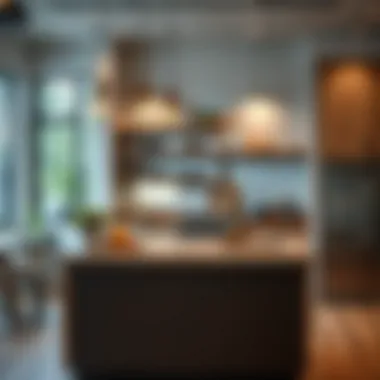

Ultimately, how will a countertop material hold up in terms of value over many years? Longevity is key. If you opt for granite or quartz, there's a good chance that these will continue to perform without significant loss of value at resale. Home buyers often seek out durable surfaces, making your careful choice a potentially valuable asset down the line.
Materials like laminate or lesser-quality options might be more likely to depreciate or appear dated faster, reflecting poorly when it comes time to sell.
In summary, the comparative analysis of durability sheds light on essential factors ensuring your kitchen counters stand the test of time. By weighing performance under stress with cost, you arrive at a thoughtful decision that integrates both practicality and aesthetics.
Maintenance Considerations for Durable Countertops
Understanding how to maintain kitchen countertops is essential for ensuring their longevity and functionality. While selecting a durable material is crucial, consistent care cannot be overlooked. Countertops endure a myriad of activities, from food preparation to spontaneous gatherings with friends. Each interaction can impact their appearance and durability over time. Therefore, knowing how to care for them properly not only retains their aesthetic value but also extends their life.
In this section, we will look into cleaning protocols, sealing techniques, and products specifically beneficial for maintaining various countertop materials.
Cleaning Protocols
Regular cleaning is a fundamental aspect of maintaining the integrity of countertops. Unlike floors or walls, countertops are directly exposed to spills, stains, and sharp objects. A simple wipe-down with a damp cloth might suffice for everyday messes. However, using the right technique and cleaning agents is key to avoiding damage over time.
- Routine Cleaning: Daily maintenance should involve soft sponges or microfiber cloths paired with warm water and mild detergent to lift any surface dirt. For stone surfaces, specific pH-balanced cleaners are recommended, while laminate surfaces might tolerate stronger solutions.
- Stain Treatment: In cases of stubborn stains, directly applying a mixture of baking soda and water can work wonders, especially on porous materials like granite. Make sure to allow it to sit and then gently scrub with a soft brush.
- Avoiding Harsh Chemicals: Products containing chlorine or ammonia can degrade the finish of many countertops. Always check the manufacturer’s recommendations before using any cleaner. A cautious approach safeguards the countertop from accidental harm.
Sealing and Protection
Sealing is a vital step, particularly for porous materials like granite or marble. By applying a sealant, one can create a protective layer that minimizes the risk of staining and helps keep liquids from being absorbed. How often to seal a countertop can vary significantly based on the type of material and usage.
Frequency and Techniques
Typically, granite countertops should be sealed every 6 to 12 months; however, testing the surface can provide clues about when to reapply. A simple water droplet test can do the trick: if water beads up, the seal is still effective. On the other hand, if water absorbs quickly, it’s time for a fresh coat.
- Application Method: The sealing process often involves cleaning the surface first, then applying a thin layer of the sealant using a cloth or foam applicator, and finally buffing it off after a set period.
- Key Characteristic: The ability of a sealant to repel stains and moisture makes it a top choice for anyone looking to protect their investment in durable countertops.
Products to Use
When it comes to selecting a sealant, it’s wise to choose products that are specifically formulated for your countertop material.
- Universal Sealers: These can work well on a variety of surfaces, but some may lack the potency needed for heavy-use areas. Be sure to check for specific recommendations.
- Natural Sealers: Organic options are often better for those keen on using eco-friendly products. These sealers can protect while being less harmful to both health and environment.
- Key Note: While some sealants require reapplication every few months, others might offer longer-lasting protection. Assessing the lifestyle and usage patterns before selecting a sealant is crucial in ensuring the right fit.
Regular maintenance not only keeps your countertops looking pristine but can also save you from costly replacements down the line.
Maintaining countertops is an art. It requires attention to detail and a commitment to understanding the unique needs of each surface. From the right cleaning protocols to effective sealing techniques, proper care ensures that your kitchen counters continue to shine in both durability and design.
Trends in Durable Kitchen Countertops
In the ever-evolving world of home design, kitchen countertops aren’t just surfaces to chop veggies or set down hot pots. They are pivotal elements of your kitchen's aesthetic and functionality. Understanding the latest trends in countertop materials helps homeowners and designers make choices that not only satisfy the eye but also withstand the test of time. These trends, encompassing technological innovations and design aesthetics, are crucial in selecting a countertop that caters to both practical needs and personal taste.
Technological Innovations
Smart Countertops
Smart countertops are making their mark in modern kitchens. These surfaces often come with integrated technology that can monitor kitchen activities, track nutrition, or even implement cooking techniques through smart apps. One major characteristic of smart countertops is their ability to be connected to other devices. This connectivity makes them a forward-thinking choice, enhancing convenience and efficiency in cooking.
For instance, a smart countertop can remind you to replace ingredients, or alert you about food safety standards, putting a very sophisticated spin on your cooking space. However, these high-tech surfaces can be pricey and may require special care. While they offer tremendous advantage for tech-savvy home chefs, it's vital to consider whether you need that level of innovation in your day-to-day cooking.
Antimicrobial Surfaces
The emergence of antimicrobial surfaces is a welcome trend, especially in a post-pandemic world. These countertops are designed to resist bacterial growth, thus adding a layer of safety. Their standout feature is the incorporation of substances that actively inhibit microbial propagation. This means that spills and splatters won't just sit around, potentially contaminating your space.
The benefit of these surfaces is clear: they add peace of mind, particularly in busy kitchens where hygiene is paramount. However, it's critical to check how well they hold up over time, as not all materials marketed as antimicrobial can withstand wear and tear. Balancing cleanliness with durability is key when considering these surfaces.
Design Aesthetics
Color Trends
Color can dramatically change the atmosphere of a kitchen, making it vibrant or subdued, depending on your choice. Currently, earthy tones and muted palettes are in vogue, as they exude warmth and connect with natural materials. Incorporating rich hues like deep greens or terracotta not only modernizes a space but also enhances its durability, as certain colors can mask stains more effectively.
In contrast, bright, bold colors are chosen more for accent purposes rather than for the main countertop. While these can infuse character, it is crucial to weigh their practicality. They often show wear more rapidly than their neutral counterparts, leading to a potential need for more frequent replacements.
Texture Innovations
Texture plays a significant role in the tactile experience of a kitchen countertop. Innovations in textures have led to a fascinating variety of options, from smooth finishes to rough-hewn looks that mimic natural stone. The textured surfaces not only offer an aesthetic appeal but also provide functional benefits such as improving grip or reducing slip.
However, these textures can complicate cleaning efforts. Nooks and crannies might provide a charming rustic feel, but they can also trap dirt and grime. When selecting textured surfaces, consider the ease of maintenance alongside visual appeal. It’s all about balancing beauty with the practicality needed for everyday use.
"The right countertop can elevate a kitchen from ordinary to extraordinary. It’s about finding that perfect balance between style and durability."
For further reading on kitchen countertop trends, visit Wikipedia or dive into discussions on platforms like Reddit.



